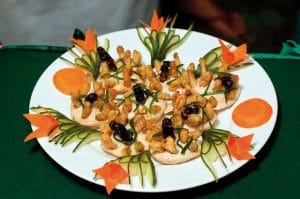Eat insects? Two billion people can’t be wrong
Insects are often considered a nuisance to human beings and mere pests for crops and animals. Yet this is far from the truth. It is estimated that insects form part of the traditional diets of at least 2 billion people. More than 1,900 species have reportedly been used as food. Insects deliver a host of ecological services that are fundamental to the survival of humankind.
They also play an important role as pollinators in plant reproduction, in improving soil fertility through waste bioconversion, and in natural biocontrol for harmful pest species, and they provide a variety of valuable products for humans such as honey and silk and medical applications such as maggot therapy. Insects provide food at low environmental cost, contribute positively to livelihoods, and play a fundamental role in nature.
However, these benefits are largely unknown to the public. Contrary to popular belief, insects are not merely “famine foods” eaten in times of food scarcity or when purchasing and harvesting “conventional foods” becomes difficult; many people around the world eat insects out of choice, largely because of the palatability of the insects and their established place in local food cultures.
Entomophagy is heavily influenced by cultural and religious practices, and insects are commonly consumed as a food source in many regions of the world. In most Western countries, however, people view entomophagy with disgust and associate eating insects with primitive behaviour or a entertainment feature on reality TV. This attitude has resulted in the neglect of insects in agricultural research.
Despite historical references to the use of insects for food, the topic of entomophagy has only very recently started to capture public attention worldwide. In 2008, within the framework of the Wageningen University–FAO partnership, a few researchers came together and began reviewing an extensive array of published and unpublished research and information on insect rearing and consumption.
Their intention was to break down the aforementioned misconceptions and contribute positively to the development of the edible insects sector. The subject of edible insects inherently covers a wide range of thematic areas, from the conservation of habitats where insects are harvested to insect ecology, the artificial rearing of insect species, the processing of insects into food and feed products, and the labelling and marketing of insect-based food and feed products.
This new publication, therefore, draws from a wide range of disciplines and areas of expertise. It is a multidisciplinary effort involving technical experts specializing in forestry, animal farming, nutrition, the feed industry, legislation and food security policies. This publication marks the first attempt by FAO to document all aspects of the insect food and feed value chain, with the aim of enabling a comprehensive assessment of the contribution of insects to food and feed security.
For the full report see http://www.fao.org/docrep/018/i3253e/i3253e00.htm
Published in International Pest Control – May/June 2013 issue.
Category: International Pest News












